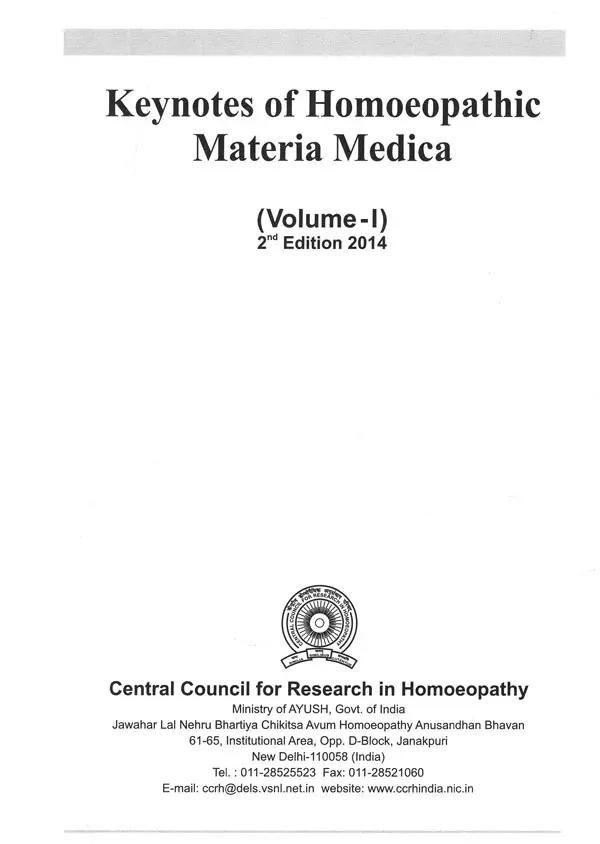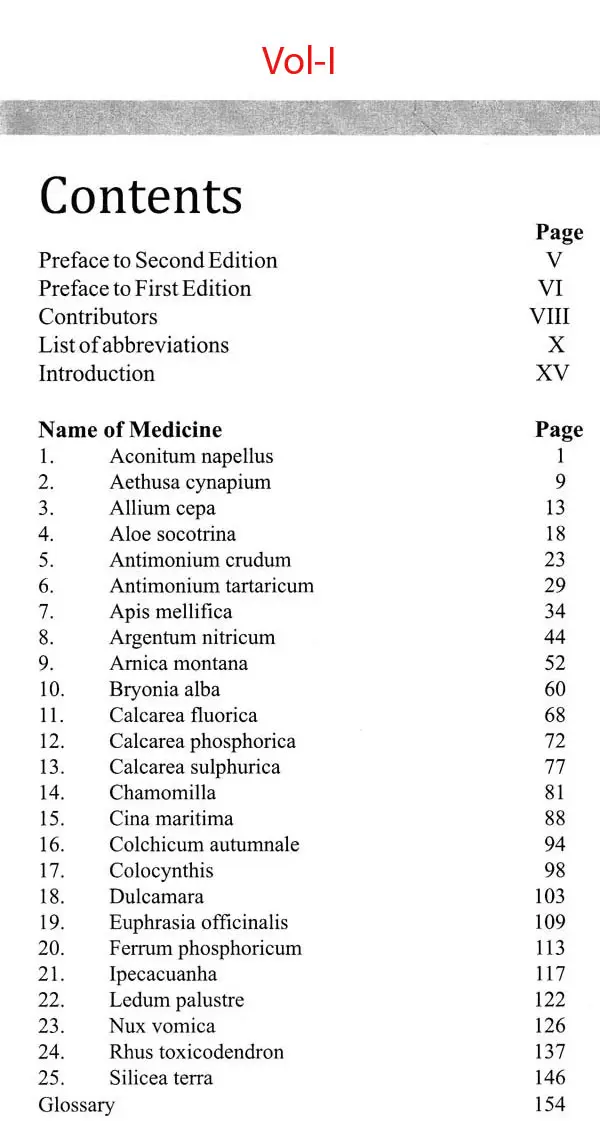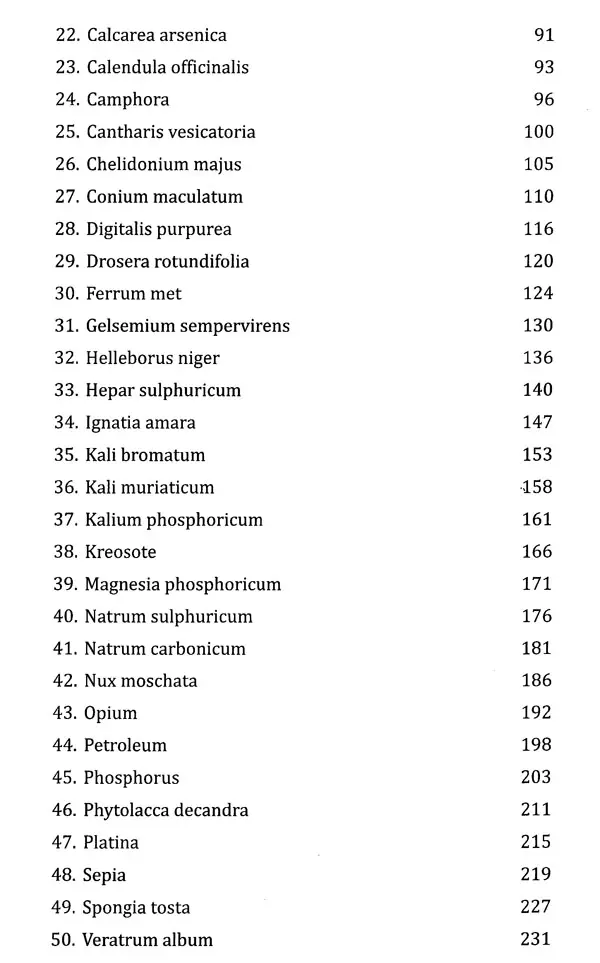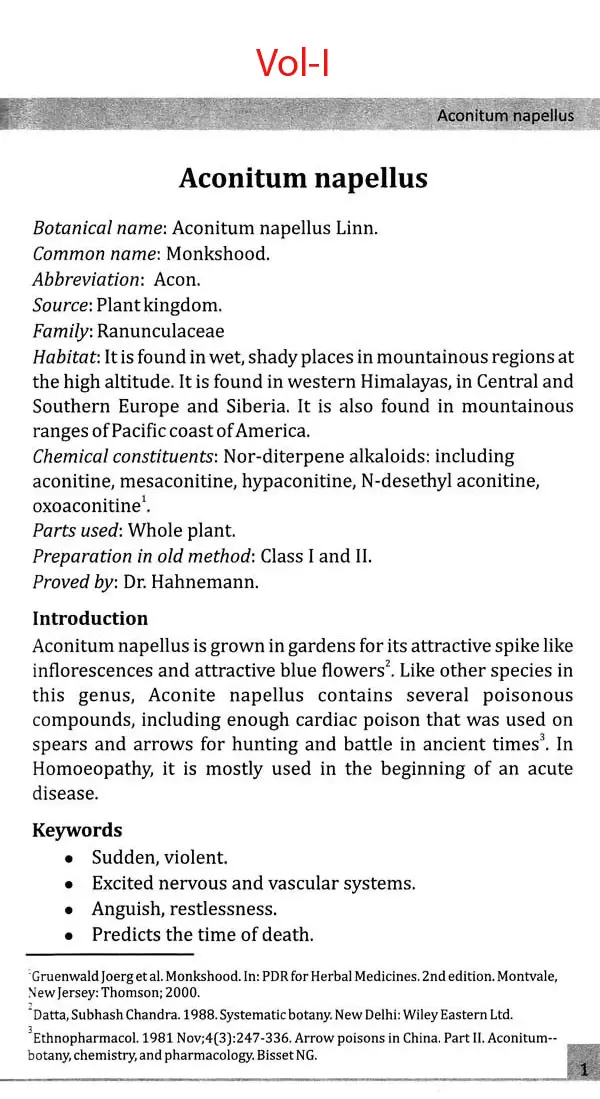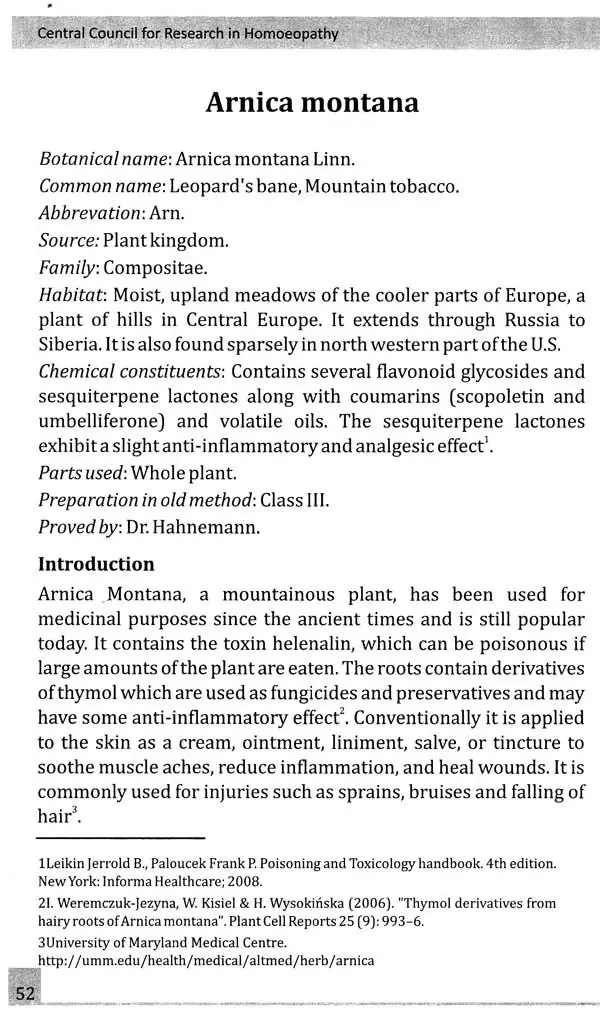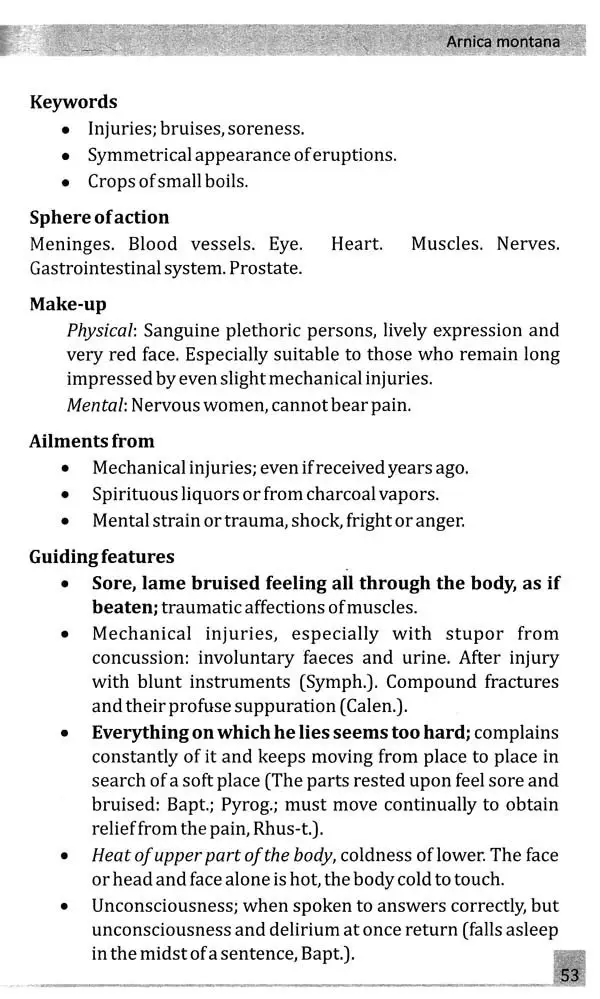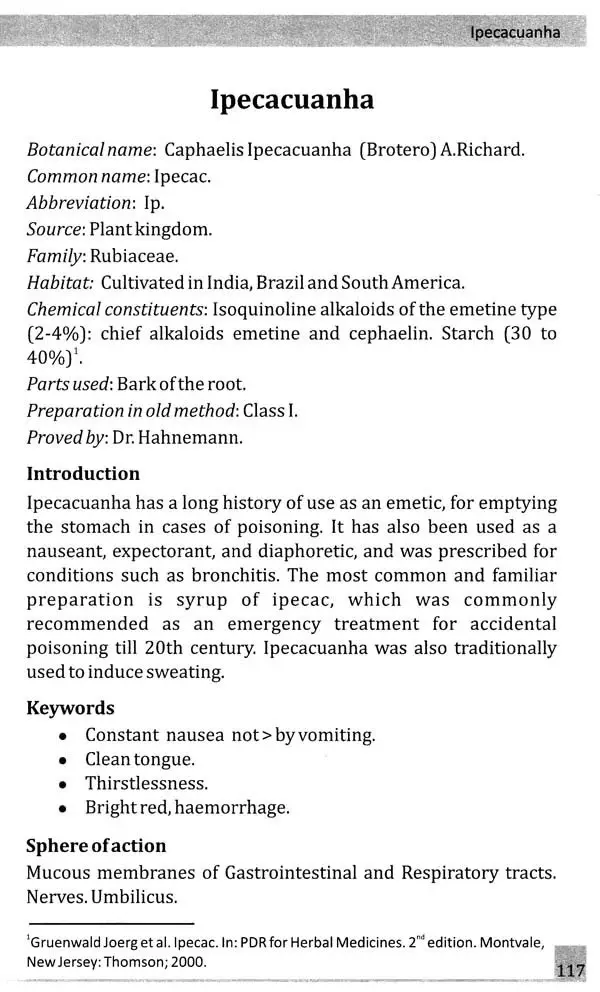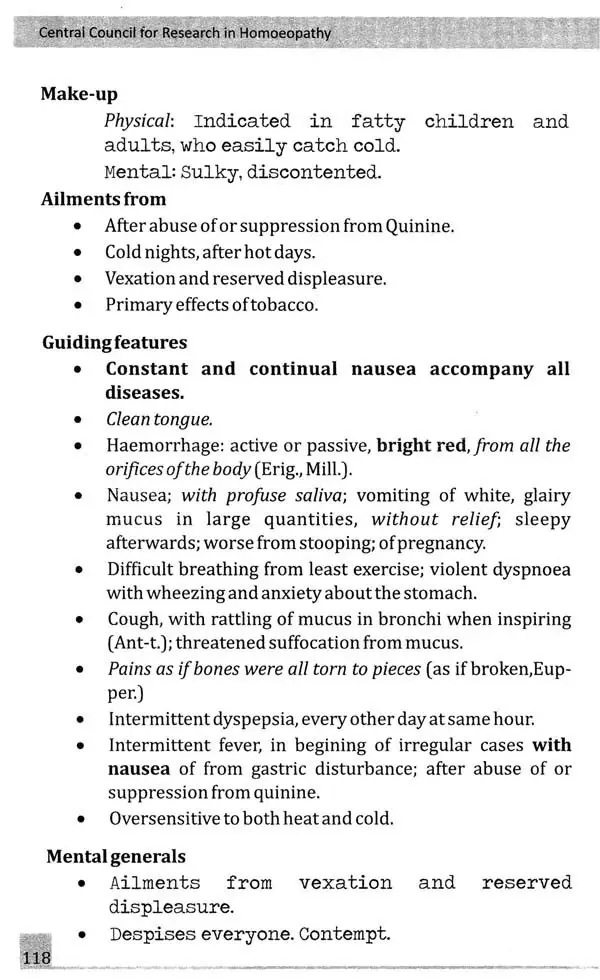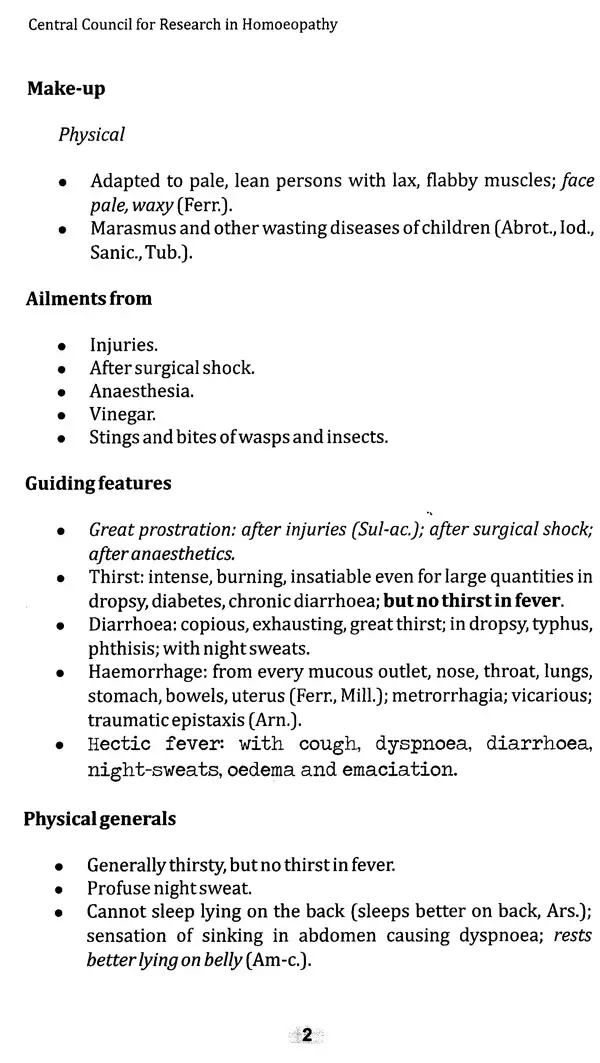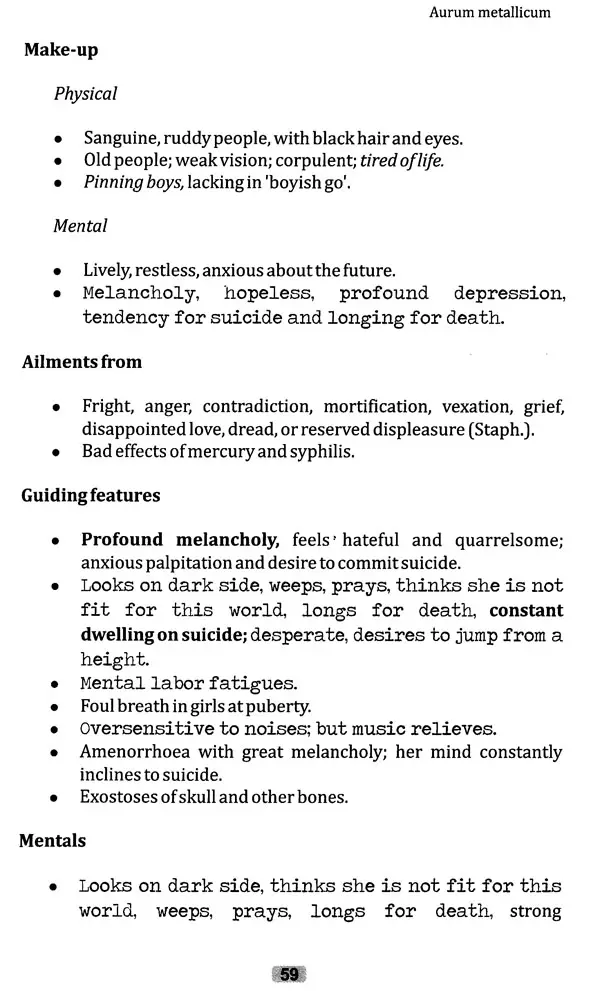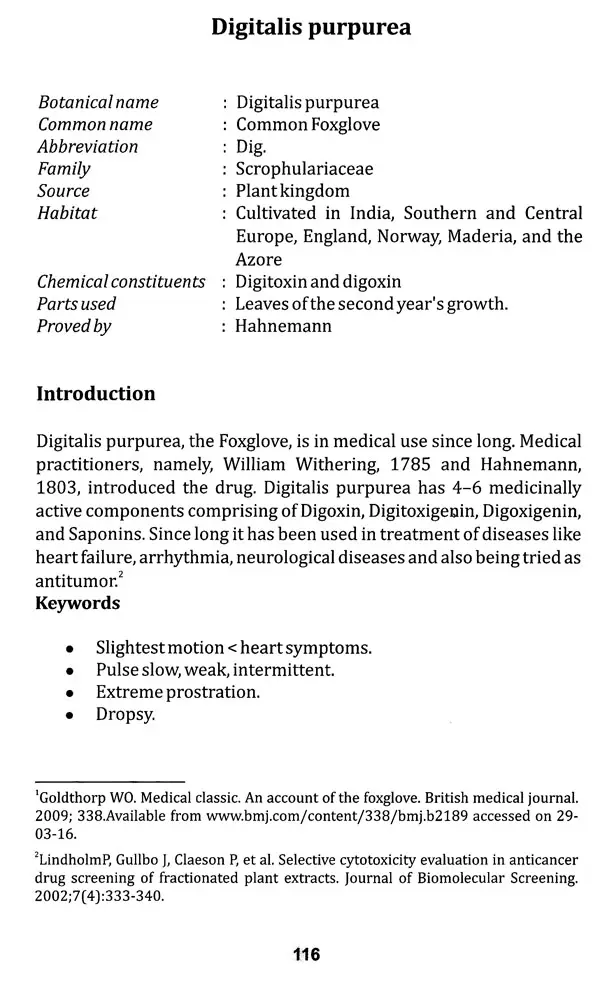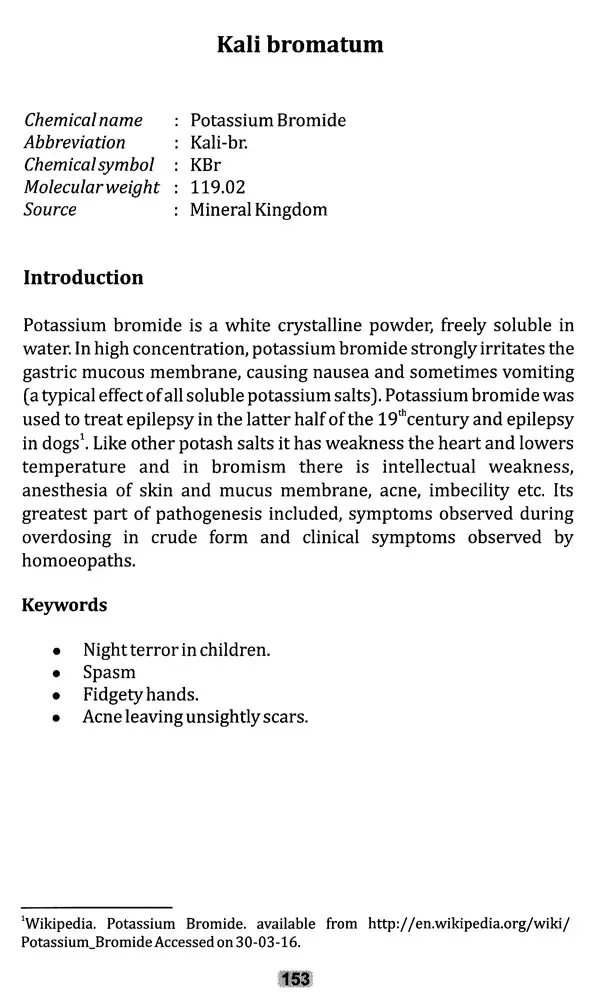
Keynotes of Homoeopathic Materia Medica (Set of 2 Volumes)
Book Specification
| Item Code: | UAP243 |
| Publisher: | CENTRAL COUNCIL FOR RESEARCH IN AYURVEDIC SCIENCES |
| Language: | English |
| Edition: | 2021 |
| ISBN: | Vol-I: 9789381458181, Vol-II: 9789381458273 |
| Pages: | 403 |
| Cover: | PAPERBACK |
| Other Details | 8.50 X 5.50 inch |
| Weight | 630 gm |
Book Description
All the copies of first edition have been sold within a short span, and there is a constant demand that indicates its popularity among homoeopathic fraternity, especially students. The first edition was published with aim to impart authentic, handy and systematic information of keynotes of remedies. This edition has following additional features:
• Introduction has been revised and given in all drugs.
• A glossary of difficult, uncommon and medically important terms is added.
• Formatting has been changed wherein "additions" from other sources have been given separate fonts.
It is hoped that readers will find this edition as an interesting and educational piece of work. A feedback will encourage us in taking up more of such endeavours.
Council profoundly acknowledges the insightful contribution of all the experts and the support of ministerial staff at headquarters in completing this novel work.
The 'Keynotes and Characteristics' being the basis of studying Homoeopathic Materia Medica and for the differentiation and selection of apparently similar homoeopathic medicines is an indispensable tool for the Homoeopaths to enable them to intelligently and successfully use our voluminous symptomatology. This book is an attempt to render the student's task less difficult, to simplify its study, to make it both interesting and useful, to place its mastery within the reach of every intelligent man or woman in the profession. The object of this work is to aid the student to master that which is guiding and characteristic in the individuality of each remedy and thus utilize more readily the symptomatology of the Homoeopathic Materia Medica.
The base of this book is Allen's Keynotes and Characteristics with incorporation of more characteristics symptoms from other Materia Medicas. The originality of the Allen's Keynotes is preserved in the book, as the symptoms with their gradation are not changed, but are arranged schematically into different anatomical headings to give more clarity to the reader.
With the above mentioned objectives the initiative taken by the 'Central Council for Research in Homoeopathy' for compilation of the "Keynotes Materia Medica, Vol-1" was a great success among the homoeopathic fraternity, especially students, which is an indication for the need of another volume of this book including medicines of Homoeopathic Materia Medica syllabus of 2nd B.H.M.S. fulfilling the aim to impart authentic, handy and systematic information of keynotes of remedies. This edition has following features:
Introduction has been given in all drugs, including its historical and general use.
A glossary of difficult, uncommon and medically important terms is added.
Formatting has been changed wherein "additions" from other sources have been given separate fonts.
For valuable considerations in the compilation of this work, the Council expresses heartfelt thanks to the members of the Expert Committee, Prof. (Dr.) Chaturbhuja Nayak, Prof. (Dr.) S. K. Bhattacharya, Prof. (Dr.) L. K. Nanda, Dr. Sunirmal Sarkar for their valuable service, clinical experience and knowledge rendered by them.
The term 'Keynotes' was first introduced in the homoeopathic literature by Dr. Henry N Guernsey, while teaching homoeopathic Materia Medica in the Hahnemann Homoeopathic Medical College, Philadelphia during 1871-73. He was of the opinion, and justifiably so, that to give the homoeopathic Materia Medica, anywhere near that can cover all the symptoms of each remedy would require at least three consecutive courses of lectures, each course to be of not less than six months long, still would barely cover the subject. His aim in teaching the 'Keynotes' was to present enough of the outline and leading characteristics of a drug, to turn the student's mind in the direction of the proper remedy, when he shall be engaged in practice and prescribing for the sick. During his lectures, he would draw the attention of his students to these characteristic keynotes and the finer shades of difference between remedies which more or less resembled each other and would explain how to distinguish between them through numerous illustrations.
Later on, Dr. Henry C. Allen took these keynotes to their fullest glory. While teaching the subject at the Hering Homoeopathic Medical College, US, around 1898, like Guernsey, he was very particular that the first step in the study of homoeopathic Materia Medica must be taken correctly with the help of these 'keynotes and characteristics'. In his view, it was a straight pathway for the study of our vast Homoeopathic Materia Medica and through these Keynotes, a student would have a comprehensive view of it, and understand its application in practice.
However, attention to its deficiencies, shortcomings etc. are also drawn by many students, practitioners, teachers, educationists and planners of homoeopathic education in our country. It is but natural by seeing its year of publication, there are many terms used in the book that have become obsolete now, lacking in latest important clinical data, omissions of some characteristic symptoms of certain medicines , its silence about the pharmacopoeial data etc.
Need for writing another Keynote Matreria Medica, taking the salient features from the available Keynote Matreria Medicas and incorporating information on pharmacopoeia) data etc, has been felt, tailoring it to suit to the requirements of our syllabi of undergraduate courses in Homoeopathic Materia Medica.
The bulk of the Keynote symptoms of this book is taken from H.C. Allen's Keynotes. The sources from which additional symptoms have been taken are: Hering's Guiding Symptoms of our Materia Medica, Hahnemann's Materia Medica Pura, J.H. Clarke's Dictionary of Practical Materia Medica, Pocket manual of Homoeopathic Materia Medica by William Boericke and Homoeopathic Pharmacopoeia of India. The gradation of symptoms of Allen's Keynotes into bold, italics and roman has been preserved in this book. The freshness to the keynotes is given by addition of features like pharmacy, key words, sphere of action, guiding features, mental generals, physical generals, clinical conditions etc. Care has been taken to rectify the lacunae and omissions of Allen's Keynotes and to arrange the particular symptoms of the medicines, in anatomical schema.
In the first instance, the medicines of Homoeopathic Materia Medica syllabus of 1st B.H.M.S. course have been dealt with, in this book. However, efforts will be continued by the Council to cover the remaining medicines of B.H.M.S. course, in future.
The term Keynotes was first introduced in the homoeopathic literature by Dr. Henry N. Guernsey, while teaching homoeopathic Materia Medica in the Hahnemann Homoeopathic Medical college, Philadelphia during 1871 73, with the aim to present characteristics of a drug to turn the students mind in the direction of a proper remedy and to illustrate finer shades of difference between remedies which more or less resembled each other. This work of keynotes has been carried forward in a glorious way by various stalwarts.
The composition present in the various Materia Medicas is the most authentic and as valuable to-day, as when it was conceived, but seeing its year of publication there are terms that have become obsolete now and because of lack of latest important clinical data, omissions of some characteristics symptoms of certain medicines, its silence about the pharmacopoeial data etc. there is need for writing another Keynote Materia Medica since nobody had, however, tried to improve the previous edition either by revising or by adding the newer data which has accumulated till date. So, there is a genuine demand by the profession for an edition which will be within the reach of every student and practicing homoeopath.
This book is made with the purpose to give most authentic information to the homoeopathic fraternity in the simplest and easily comprehensible way (like homoeopathy itself). The actual symptom of each drug, as given by Dr. H. C. Allen are herewith presented with additions of more characteristics from other sources like Hering's Guiding Symptoms of our Materia Medica, Hahnemann's Materia Medica Pura, J. H. Clarke's Dictionary of Practical Materia Medica, Pocket manual of Materia Medica by William Boerick and Homoeopathic Pharmacopoeia of India, to suit the requirements of our syllabi of undergraduate courses of Homoeopathic Materia Medica. The gradation of Symptoms of Allen's keynotes into bold, italics and roman has been preserved in this book.
**Contents and Sample Pages**
